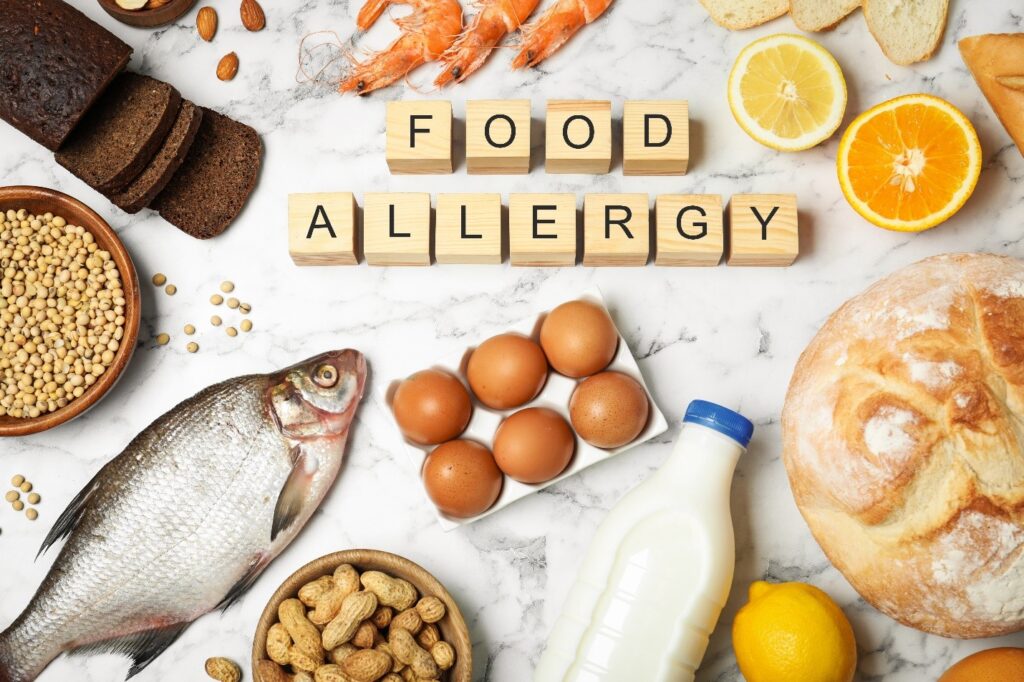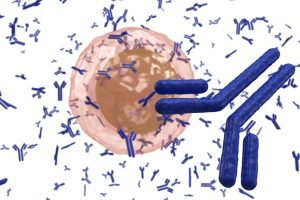Food allergies are becoming increasingly common among children and adults alike. It seems as though everyone knows someone who suffers from a food allergy. The most typical food allergies include dairy, soy, nuts, shellfish, and others.

Some additional types of food allergies include seed, gluten, and wheat allergies.
While the majority of food allergies occur during childhood, they often persist throughout adulthood. With an increase in awareness surrounding food allergies, it is important to understand the signs and symptoms of a food allergy and how to avoid them where possible.
In what follows, we’ll discuss the different signs and symptoms associated with food allergies, detailing the three main categories of food allergies and their characteristics. In part two of this topic, we’ll explore several ways to prevent such allergies, focusing primarily on childhood allergies and how breastfeeding may be a potential solution.
Common Signs and Symptoms of Food Allergies
Signs and symptoms will vary depending on the category, type, and severity of food allergy. There are, however, several common signs and symptoms that tend to be associated with food allergies.
No matter the category, type, or severity, the signs and symptoms of food allergies often present themselves almost immediately after ingestion of the food allergen itself. This, unlike other types of allergies, is a significant distinction of food allergies. This quality can significantly assist a clinician in making the diagnosis of some specific types of food allergy.
Although immediate symptoms are the most common presentation, in other particular types of food allergies, this doesn’t always occur. As will be discussed, non-IgE-mediated allergies can take days for any signs or symptoms to become evident.
The following are the most common signs and symptoms of the most prevalent food allergies, present in both children and adults alike:

- Itchiness of the Skin, Eyes, or Mouth
- Hives
- Skin Redness
- Swelling of the Face or Mouth
- Shortness of Breath
- Lightheadedness
- Nausea and Vomiting
- Abdominal Pain
In the most severe of circumstances, anaphylaxis can occur, characterized by a state of shock that can be life-threatening unless immediate emergent attention is received and medication administered, such as epinephrine or otherwise.
Three Categories of Food Allergies
The discussion of categories of food allergies refers to the subtypes under the main types of food allergies. The categories are distinguished by the causes, length of time of the allergy, and specific symptoms.
The three (3) main categories of food allergies are:
- IgE-Mediated (Cat. 1)
- Non-IgE-Mediated (Cat. 2)
- Mixed Category (Both IgE and Non-IgE)
IgE-Mediated (Cat. 1)
Category 1 food allergies are caused by an immune system response that produces antibodies against specific proteins found in specific foods. These antibodies attack the proteins in the food and cause a cascade of responses that cause inflammation in the body and result in symptoms such as hives, eczema, asthma attacks, vomiting, diarrhea, abdominal pain, fatigue, headaches, and joint pain.
This first category of food allergy usually presents itself in individuals between 6 months and 5 years of age. The most common foods involved in IgE-Mediated food allergies include cow’s milk, egg whites, peanuts, tree nuts, wheat, soy, and corn.
Non-IgE-Mediated (Cat. 2)
Unlike IgE-Mediated food allergies, category 2 food allergies involve a reaction that doesn’t involve the presence of antibodies.
Non-IgE-Mediated food allergies are typically associated with delayed hypersensitivity responses. Such responses can include contact dermatitis, urticaria, angioedema, rhino-conjunctivitis, oral allergic syndrome, eosinophilic gastroenteritis, atopic keratoconjunctivitis, and anaphylaxis.
Symptoms involved in Cat. 2 food allergies typically appear within minutes to just a few hours after eating the particular food. The most common foods involved with category 2 food allergies include fruits, vegetables, legumes, spices, chocolate, citrus fruit, tomatoes, garlic, onions, strawberries, celery, nuts, shellfish, and alcohol.
Mixed (IgE and Non-IgE)
Food allergies that involve a combination of mediators are known as IgE-Mediated and Non-IgE-Mediated responses. An individual who develops a food allergy that has aspects that are mediated by antibodies and aspects that are not caused by antibodies is in this category.

Whichever category or type in question, it’s approximated that 10% of the world’s population lives with some form of food allergy. If this population of individuals is limited to the United States, it’s estimated that 5% of children and 4% of adults live with one or more food allergies. Of these, 20% are said to be severe allergies.
According to the National Institute of Health, 30,000 fatalities occur yearly due to food-borne allergies.
Final Thoughts
During the suspicion of any type or category of food allergy, whether mild or severe, it’s important to avoid exposure to the suspected food until a proper diagnosis has been made by a medical professional.
Should a mild reaction occur before reaching a doctor, antihistamines are the first recommended treatment. However, emergent medical attention is required when a more severe reaction occurs.
